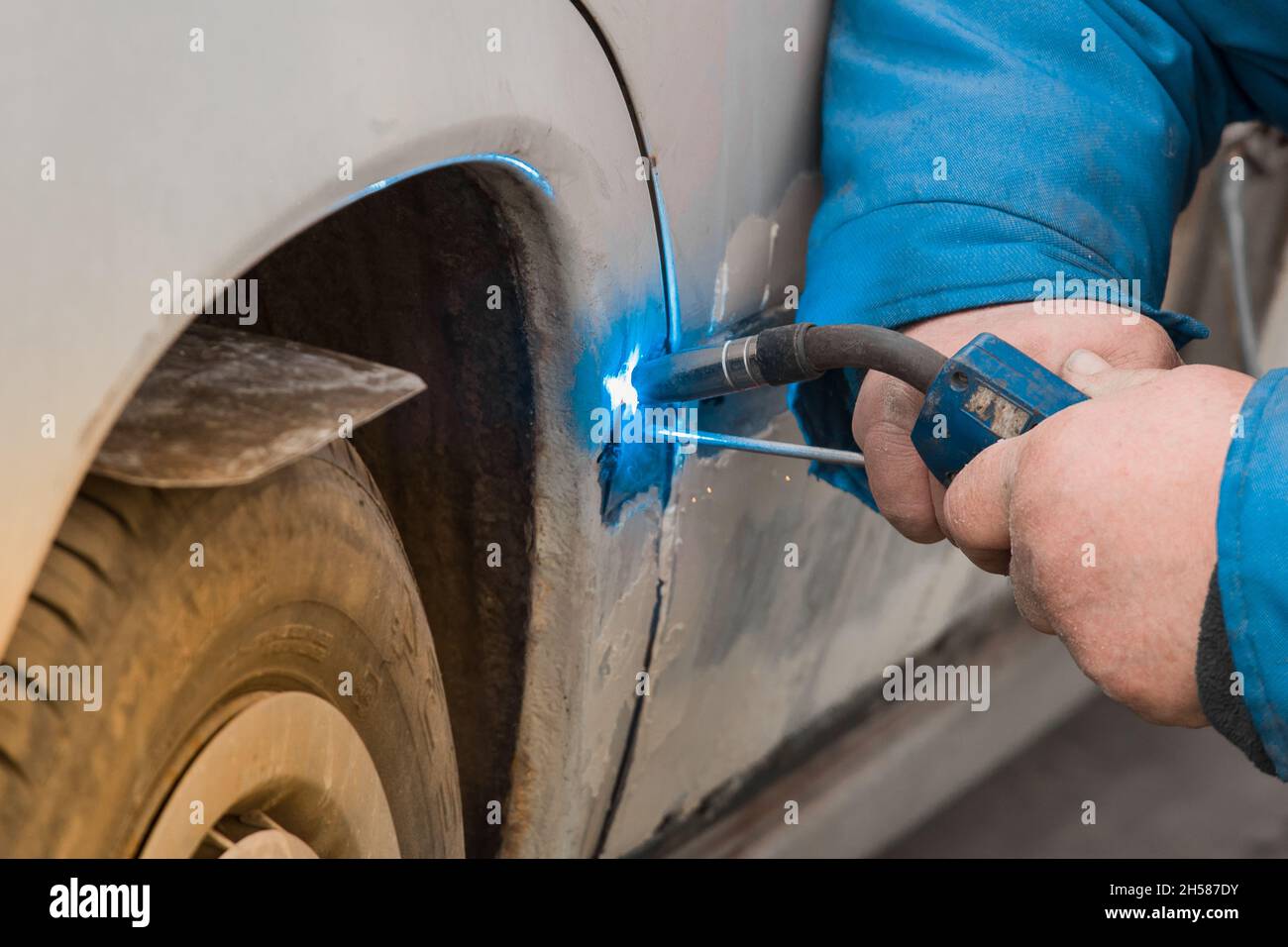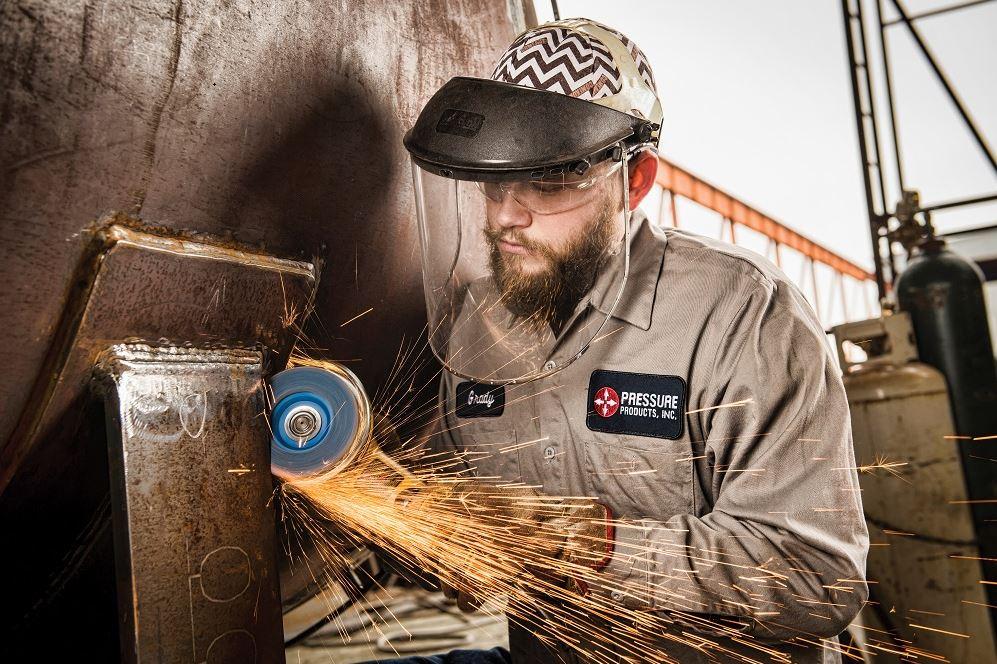How to respond when encountering porosity in Montana Mobile Welding and Repair Welding
Usual Welding Repair Service Issues and Exactly How to Address Them Properly
Welding repairs frequently come across a series of concerns that can jeopardize the stability of the end product. Usual troubles include poor infiltration, porosity, and imbalance, to name a few. Each issue offers one-of-a-kind challenges that require certain approaches for resolution. Recognizing these problems is essential for welders aiming to enhance their end results and skills. This conversation will certainly discover these common welding fixing issues and effective methods to address them.
Poor Infiltration
Poor infiltration occurs when the weld metal falls short to completely fuse with the base product, leading to weak joints and possible structural failings. This concern commonly comes from insufficient heat input, incorrect electrode angle, or incorrect welding speed. Welders may run into inadequate infiltration because of a miscalculation of the necessary criteria for a particular product thickness or kind. Additionally, contamination on the base product's surface area can prevent efficient bonding, worsening the issue. To deal with insufficient infiltration, welders need to assure ideal setups on their equipment and keep a tidy work surface area. Routine assessment of welds is suggested to determine any kind of deficiencies early, allowing for timely modifications and the avoidance of compromised structural honesty in welded assemblies.
Porosity
Porosity is a common defect in bonded joints that materializes as small gas bubbles caught within the weld metal. This problem can endanger the integrity of the weld, bring about decreased stamina and prospective failure under stress. Belgrade Welding. Porosity commonly develops from contamination, wetness, or improper welding strategies, which enable gases to leave right into the liquified weld swimming pool. To attend to porosity, welders need to guarantee proper surface prep work, maintain a tidy workplace, and use suitable welding parameters. In addition, picking the ideal filler product and shielding gas can alleviate gas entrapment. Regular inspection and testing of welds can aid recognize porosity early, assuring prompt restorative actions are taken, therefore protecting the top quality and dependability of the welded structure
Misalignment
Imbalance in welding can arise from different aspects, consisting of incorrect configuration and thermal development. Comprehending the source is vital for effective resolution. A number of modification strategies are offered to straighten components and guarantee architectural stability.
Sources of Imbalance
Welding misalignment often originates from a variety of underlying issues that can endanger structural honesty. One key cause is inappropriate fit-up of parts prior to welding, which can lead to spaces and uneven surfaces. Variants in thermal growth during the welding procedure can likewise result in distortion, especially if the products being joined have various coefficients of development. Furthermore, poor clamping and fixturing might stop working to hold elements safely in area, bring about motion throughout welding. Badly maintained devices, consisting of welding makers and devices, might present incongruities in the weld bead, further adding to imbalance. Operator mistake, stemming from insufficient training or experience, can also play a substantial role in producing misaligned welds.

Correction Methods Available
Attending to misalignment properly calls for a combination of restorative techniques customized to the certain concerns at hand. One common technique is using jigs or components to hold parts in the appropriate setting throughout welding, making sure consistent positioning. In addition, pre-heating the materials can help decrease distortion and improve fit-up. For substantial imbalance, mechanical realignment methods, such as making use of hydraulic jacks or clamps, can be employed to deal with the setting before welding. Post-weld warmth treatment may also be essential to alleviate tensions triggered by imbalance. Careful assessment and adjustment during the configuration phase can prevent imbalance concerns from becoming considerable issues, advertising a smoother welding procedure and improving general architectural stability.
Distortion
Distortion is a common challenge in welding that can emerge from numerous aspects, consisting of uneven heating and cooling. Comprehending the causes of distortion is essential for applying effective avoidance methods. Addressing this concern not just boosts structural stability yet likewise improves the overall top quality of the weld.
Reasons for Distortion
When subjected to the extreme heat of welding, products usually undertake modifications that can bring about distortion. This phenomenon primarily occurs from thermal expansion and tightening during the welding procedure. As the weld location warms up, the material increases; upon air conditioning, it gets, which can create interior stresses. Furthermore, uneven home heating throughout a workpiece can intensify these stress and anxieties, resulting in warping or flexing. The kind of product likewise plays a significant function; steels with varying thermal conductivity and coefficients of expansion might react differently, causing unforeseeable distortions. Bad joint layout and inadequate fixturing can add to imbalance throughout welding, increasing the probability of distortion. Understanding these causes is crucial for efficient welding repair service and prevention approaches.
Prevention Techniques
Effective avoidance strategies for distortion throughout welding concentrate on controlling heat input and ensuring correct joint layout. Maintaining a constant warm input assists to lessen thermal expansion and contraction, which can result in distortion. Making use of techniques such as preheating the workpiece can also decrease the temperature level slope, advertising uniform heating. In addition, picking suitable joint designs, such as T-joints or lap joints, can boost stability and decrease anxiety focus. Carrying out proper fixturing to safeguard surfox the workpieces in position additionally aids in maintaining positioning during the welding procedure. Staggered welding series can distribute heat more equally, avoiding local distortion. By using these approaches, welders can significantly reduce the possibility of distortion and boost the general high quality of their welds.
Splitting
Cracking is a typical problem come across in welding repair services, frequently arising from different variables such as improper air conditioning prices, product choice, or inadequate joint preparation. The event of fractures can considerably jeopardize the stability of the weld, causing potential failures throughout procedure. To resolve this concern, welders should first assess the origin, making certain that products are suitable and properly selected for the certain application. Additionally, controlling the cooling price throughout the welding procedure is vital; quick cooling can cause anxiety and lead to splitting. Proper joint style and prep work additionally add to minimizing the threat. Applying these strategies can improve weld quality and toughness, inevitably minimizing the probability of fracturing in ended up weldments.

Insufficient Fusion
A significant problem in welding repair services is insufficient fusion, which happens when the weld steel does not sufficiently bond with the base material or previous weld passes - Belgrade. This problem can result in weak points in the joint, potentially endangering the stability of the welded structure. Aspects adding to insufficient blend include insufficient heat input, incorrect welding technique, and contamination of the surface areas being joined. To address this concern successfully, welders should guarantee correct pre-weld cleaning and surface prep work, as well as adjust their welding criteria to accomplish appropriate penetration and fusion. Regular examination throughout the welding procedure can additionally help identify insufficient blend early, permitting timely restorative measures to enhance the total quality of the weld
Overheating
While welding repairs can enhance structural honesty, overheating offers a substantial obstacle that can result in material degradation. Too much heat throughout welding can alter the mechanical buildings of steels, leading to decreased stamina, boosted brittleness, and bending. This sensation is particularly important in high-stress applications where structural dependability is extremely important. Identifying overheating can involve aesthetic examinations for staining or distortion, in addition to keeping an eye on temperature during the welding procedure. To mitigate the dangers associated with getting too hot, welders need to employ ideal strategies, such as regulating warmth input, changing traveling rate, and making use of appropriate filler materials. In addition, executing pre- and post-weld warmth treatments can assist bring back product residential properties and enhance the total top quality of the fixing, ensuring lasting efficiency and safety.
Often Asked Questions
What Are the Usual Indications of a Welding Issue?

Exactly How Can I Check My Welds for High quality?
To check welds for high quality, one can utilize visual assessments, ultrasonic testing, and radiographic approaches. Each technique assures architectural stability, identifies problems, and confirms adherence to specified standards, inevitably improving the dependability of the welded joints.
What Safety Preventative Measures Should I Take While Welding?
When welding, one must focus on safety and security by using appropriate individual protective tools, making sure appropriate ventilation, protecting flammable materials away, maintaining a tidy work area, and recognizing surroundings to prevent injuries and mishaps.
Can I Repair a Weld Without Redesigning the Entire Joint?
Fixing a weld without remodeling the entire joint is feasible, depending on the damages (Montana Mobile Welding and Repair Welding). primeweld 225x Methods such as grinding, adding filler product, or using a welding procedure can effectively address particular imperfections while protecting the bordering structure
What Equipment Are Crucial for Reliable Welding Services?
Essential devices for efficient welding repair services consist of a welding machine, wire brush, grinder, protective gear, clamps, and filler materials. Each device plays an important role in guaranteeing quality and safety throughout the repair work procedure. Porosity normally develops from contamination, dampness, or improper welding strategies, which allow gases redirected here to get away right into the liquified weld swimming pool. Inadequately conserved tools, including welding machines and tools, might present inconsistencies in the weld bead, additional contributing to imbalance. When subjected to the extreme warmth of welding, products usually undergo adjustments that can lead to distortion. Breaking is a common concern run into in welding fixings, usually resulting from different elements such as inappropriate air conditioning rates, product selection, or insufficient joint preparation. A significant concern in welding repair work is insufficient fusion, which takes place when the weld steel does not properly bond with the base material or previous weld passes.